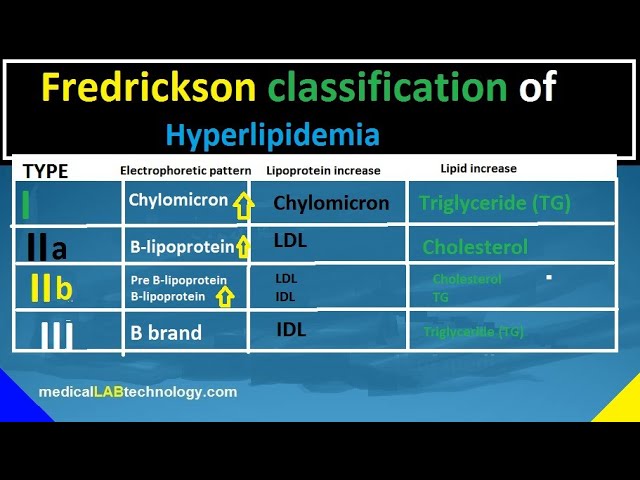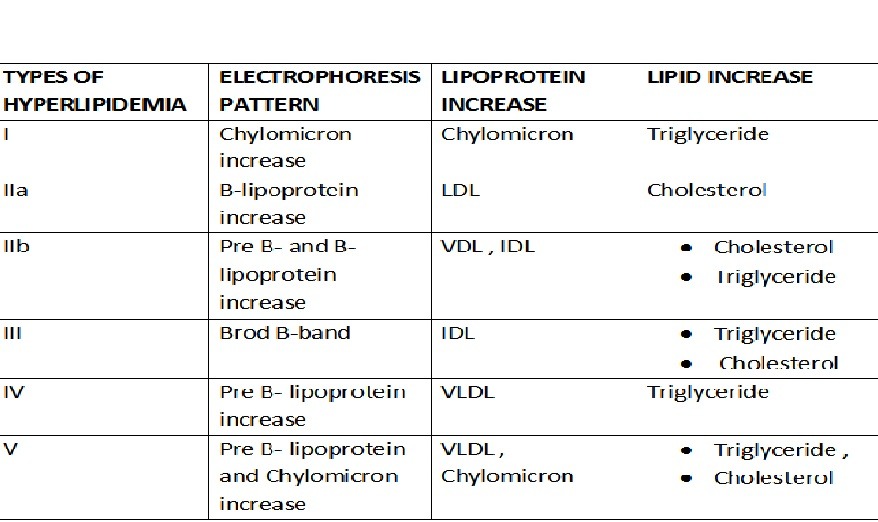Hyperlipidemia means a high level of lipid content in the blood. It may be due to a primary cause or secondary. Secondary cause due to some kinds of disease
- Diabetes Mellitus
- Hypothyroidism
- Nephrotic Syndrome
Fredrickson classified hyperlipidemia on the base of an electrophoretic pattern of lipoprotein. There are six types of hyperlipidemia.
Here’s the video of Fredrickson’s classification of hyperlipidemia (type I, II, IIa, IIb, III, IV, V) is based on the electrophoretic pattern of lipoprotein.

